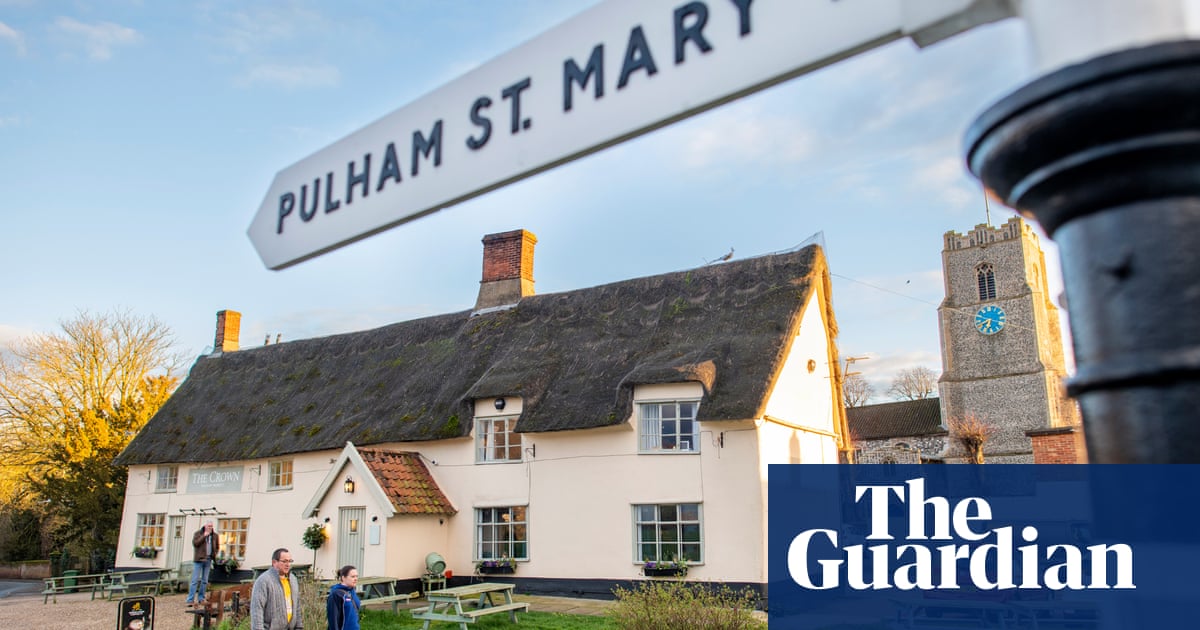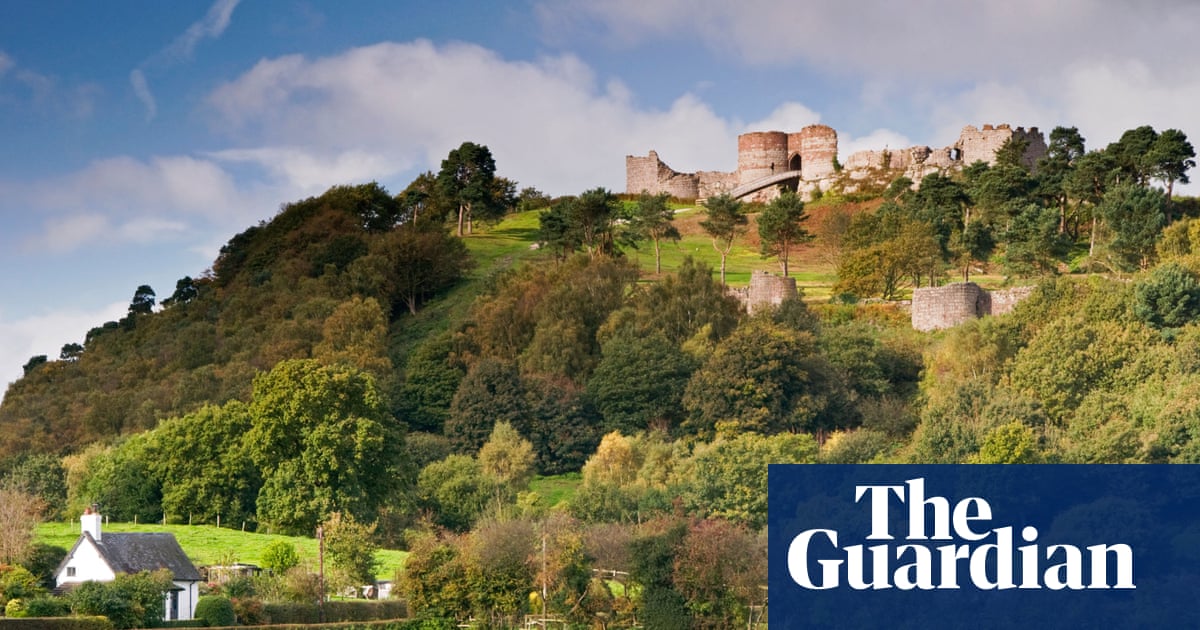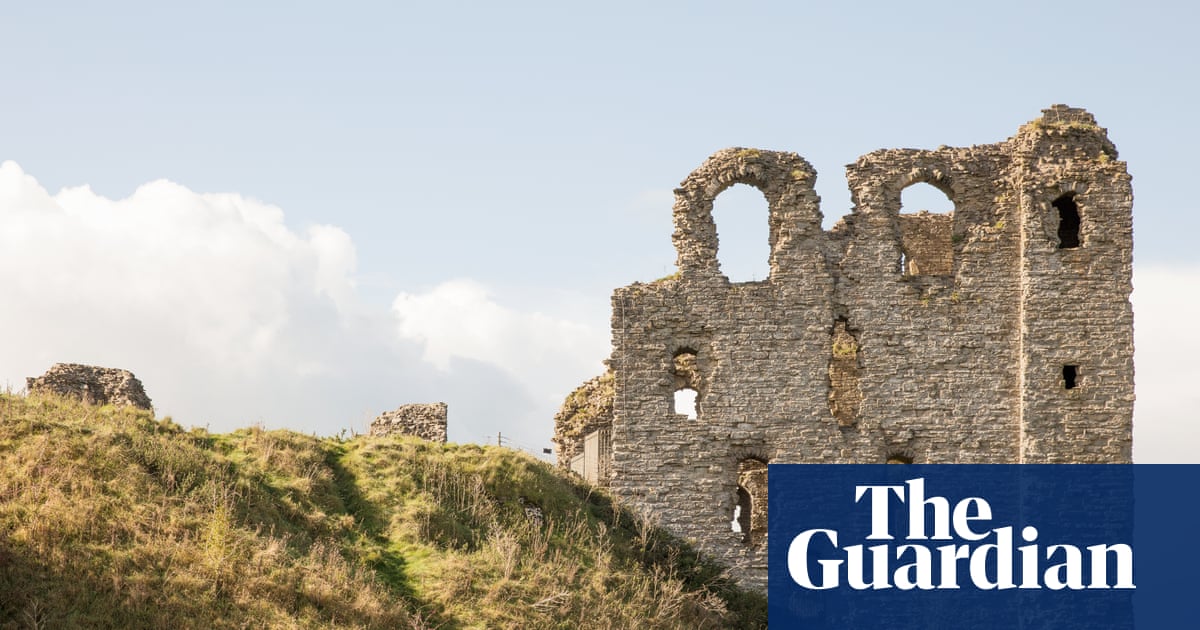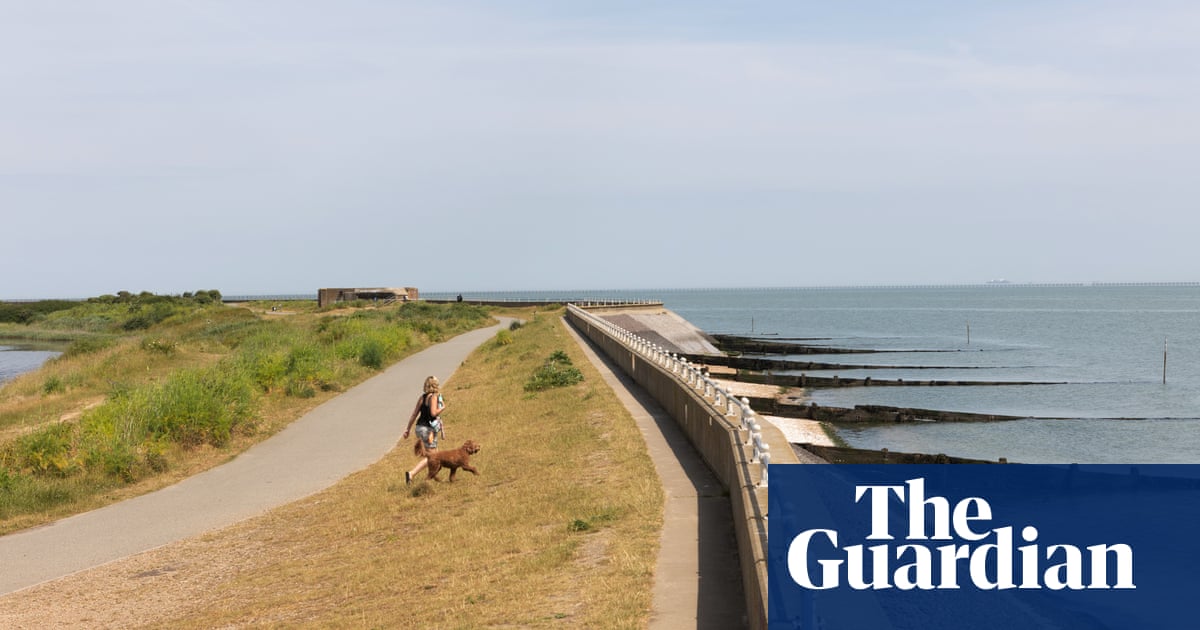
The loch reflects scattered clouds, gaps of sky, sunlit mountains and an imposing modernist dam. A watchful heron stands on a rock in the shadow of the concrete cliff. Pitlochry dam is one of nine power stations in the Tummel valley hydroelectric scheme. Before it opened in 1951, only one in every 200 crofts here had electricity. A fish ladder, added two years later to help salmon swim back up to their Highland spawning grounds, is now a tourist attraction. SSE, the energy company that harnesses power generated by the dam, opened a visitor centre in 2017.
The backdrop includes the wooded hills of Highland Perthshire and the mottled peak of Ben Vrackie. There are lots of more energetic options for hiking through these landscapes, but this gentle, wooded amble from the railway station is perfect for an afternoon that ends in the pub. The walk has its share of mountain views across Loch Faskally, created by the dam, and is rich in bird and plant life, from Himalayan blue poppies in the Explorers’ Garden to carpets of wood sorrel in Faskally Forest. There’s a chance to spot red squirrels, rent a boat, and even swim in the loch.
My first view of Pitlochry dam comes soon after leaving the station, as I walk down through woods to an Edwardian suspension bridge. The old village of Port na Craig on the far bank is now dominated by Pitlochry Festival Theatre. Its founder, John Stewart, hid a note near the river during the second world war that read: “When peace is declared I shall return to this spot to give thanks to God and to establish my Festival.” The first one was in 1951, and for decades the festival took place in a temporary tent-like building. The 1980s theatre that replaced it was upgraded in 2022 with a glass, brick and timber extension that wraps the older building. On the hillside above, the glades of the Explorers’ Garden represent different parts of the world, from North America to New Zealand. Clusters of autumn crocuses flower pale purple by the path.
Climbing alongside the 34 pools of the fish ladder, I peer into the swirling water, looking in vain for the last few salmon, then walk on under tall trees. There are views all the way across the cloud-echoing loch. It’s typically changeable Scottish weather. One minute there’s sunlight glinting down through the beech leaves and the next I’m spritzed by a bracken-scented shower. A veil of drizzle, with a hazy rainbow suspended in it, drifts in front of the pines as I cross the Clunie bridge in Faskally Forest.
Stones from the old bridge, demolished when the dam was built, have become a viewpoint from which to admire the artificial loch, ringed by trees on the edge of autumn glory. An early-19th-century book, Account of the Principal Pleasure Tours in Scotland, describes the “delightful retreat of Archibald Butter, Esq near the Tummel and surrounded on all sides by fine banks of wood”. Butter’s woodlands became a centre for training foresters until the late 1960s. The 23 species that flourish there now include oak, Douglas fir and wild cherry. I follow an undulating lochside path under fragrant Scots pines.
Little Loch Dunmore, in the middle of the woods, has a wooden footbridge and boathouse. At an annual autumn light show here called Enchanted Forest (5 Oct-5 Nov 2023), coloured floodlights are angled into the branches of mossy mountain ash and bending beech trees. It’s an after-dark spectacle.
For now, the afternoon sunshine picks out gold leaves of a cascading silver birch and the loch’s mosaic of lily pads. There’s no sign of the goldeneye ducks that nest up in the trees here, but the forest is full of birdsong and a robin is perched quizzically by a rotating disco ball, trying to peck his pixelated reflection.
As I head back towards Pitlochry, a great quacking herd of mallards has gathered on the shore near a sign on the cafe that reads: “Duck Food 75p.” There are kayaks, rowing boats, pedalos or standup paddleboards to hire for exploring the still waters. Just before I get back to the dam, a red squirrel runs right across the path in front of me.
A few steps further and I reach an idyllic lochside beach and can’t resist digging my swimming costume out of my rucksack. A swimmer tells me the water temperature is still 13C and I manage about 10 minutes, emerging with an after-swim glow to match the molten light. I warm up with a coffee in the dam’s visitor centre, where the glass-walled cafe perches on stilts above the riverbank.
A live-feed camera in the cafe shows underwater footage from the fish ladder. Most of the salmon have already swum upstream, but there’s a busy scene of bubbles streaming and larvae darting among drifting leaves. There are displays on the life cycle of salmon and the engineering involved in hydroelectric power.
A hundred steps lead down to the riverbank again and finally I’m heading into town along winding Ferry Road. A fast-flowing stream called the Moulin Burn runs next to it, rushing down towards the River Tummel.
It has driven centuries of mills, powering local industries: cloth and cornmeal, logging and laundry. It still turns a waterwheel next to a creeper-covered, 18th-century stone building in the middle of Pitlochry. This was once a cornmill and is now the Old Mill Inn.
Google map of the route
Start Pitlochry railway station
End The Old Mill Inn, Pitlochry
Distance 5¼ miles
Time 2½ hours
Total ascent 224 metres
Difficulty Easy
GPX map of the route at Ordnance Survey
The pub
Sipping whisky by the millstream and watching the waterwheel is a relaxing way to end the walk. There’s food (mains from £17) and, on Fridays and Saturdays, live music. Tonight it’s a rock band from Dundee.
After 9.30pm on music nights, the Old Mill morphs from chilled family-friendly hangout to party central where dancing on the bar is not unheard of. Alongside regular Belhaven beers, there’s a rotating cast of guest ales from local breweries such as Inveralmond in Perth. Even closer to home are Pitlochry’s distilleries, including the prolific Edradour, based in a traditional farmhouse. Edradour’s 10-year-old single malt, aged in sherry casks, tastes like liquid plum pudding and gleams like treacle.
The Old Mill’s big seasonal beer garden, over a bridge from the pub, with a tented area and outdoor bar, is open from Easter to the end of October.
theoldmillpitlochry.co.uk
Where to stay
The 13 modern rooms at the Old Mill start at £149 B&B, though Pitlochry is packed with other places to eat and to stay. The 17th-century Moulin Hotel, in a pretty village up the hill, has doubles from £120 B&B, its own brewery and a rushed-off-its-feet restaurant. I’m staying at Pitlochry Youth Hostel, a short stagger from the pub, where my twin en suite room is £45. The hostel is licensed and has kitchens and sitting rooms for guests, with views across the rooftops to the wooded hills.












